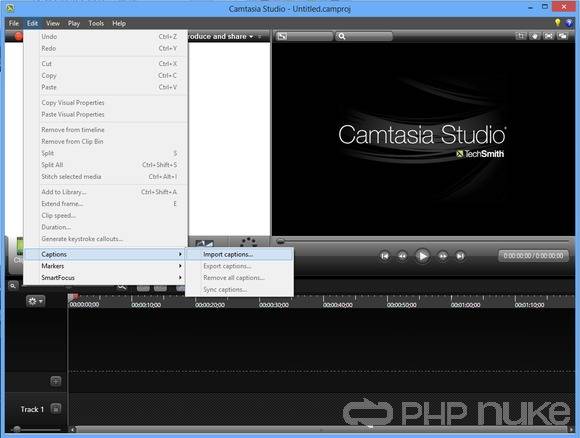
For example, if you have nested groups, or multiple effects stacked on each other, or have dozens of tracks stack on each other, or any combination of above.

However they may also hurt the rendering performance if not used properly. Groups, effects, transitions, behaviors etc are some of the cool features Camtasia provides that can really make your video engaging. An excessively edited timeline can quickly bring your resources and performance down and flattening the media in a pre-edit step can save your a lot of time for the real touch step.

If you have hundreds of editing to remove "umms" and "ahhs" etc for a recording, consider flattening this (producing to a file) timeline, then bring it back for further editing (adding effects, callouts etc other stuff).

As Camtasia will scale it on the fly during rendering process and big image also consumes more memory and resources, this hurts the performance very quickly. If you have image files that have very large dimensions and you use a lot of places on timeline as very small thumbnail sized image, consider scaling it down before using it in Camtasia, this is especially true if you have a lot of them.
Scale down very large image files before importing to Camtasia. When possible, copy the files you use to the primary local hard drive, this usually gives you a better performance. Not only short, usually smaller files can be moved around easily, they are more performed on timeline as Camtasia would spend less time retrieving the data from a shorter and smaller file. Stick with short and multiple recordings and avoid long recordings. Here is a list of tips for timeline building process. You may run: dxdiag.exe then "save all information." to find out how much of the dedicated video memory your video card uses:Ī SSD drive has faster disk I/O and helps the performance in many ways during recording, editing and production process.Ĭamtasia 9 is a very powerful tool that can build very complex timeline, if we don't pay attention, we can easily run into performance issue. However you may be able to pick which card to use in the control panel (something like this in the screenshot):Īlso dedicated video memory work better than shared video memory. Some machine may have more than one graphic cards, Camtasia picks up the default card for rendering work. Get a dedicated video card with at least 256 MB or more dedicated video memory Īn integrated graphic/video card would work, but a dedicated card would usually work better. Get the latest generation of i7 CPU, 16 GB or more memory. Here is what I would get for a machine today: Choose hardware that works better for the rendering performanceĬamtasia 9 has a set of system requirements which can be found here: but if performance is your major concern, you usually don't want to get a machine that just meets the minimum requirements.







 0 kommentar(er)
0 kommentar(er)
